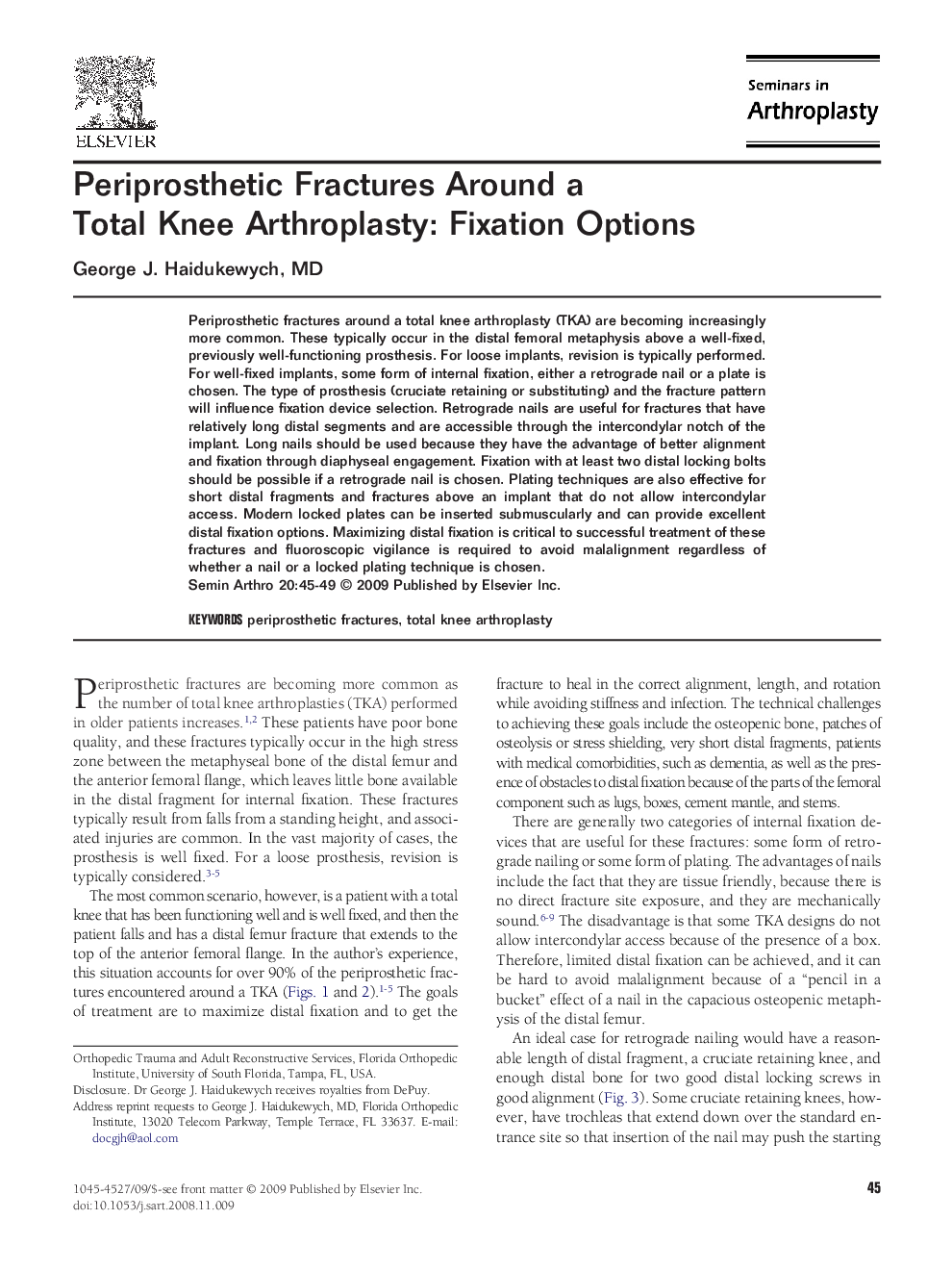| کد مقاله | کد نشریه | سال انتشار | مقاله انگلیسی | نسخه تمام متن |
|---|---|---|---|---|
| 4094259 | 1268449 | 2009 | 5 صفحه PDF | دانلود رایگان |

Periprosthetic fractures around a total knee arthroplasty (TKA) are becoming increasingly more common. These typically occur in the distal femoral metaphysis above a well-fixed, previously well-functioning prosthesis. For loose implants, revision is typically performed. For well-fixed implants, some form of internal fixation, either a retrograde nail or a plate is chosen. The type of prosthesis (cruciate retaining or substituting) and the fracture pattern will influence fixation device selection. Retrograde nails are useful for fractures that have relatively long distal segments and are accessible through the intercondylar notch of the implant. Long nails should be used because they have the advantage of better alignment and fixation through diaphyseal engagement. Fixation with at least two distal locking bolts should be possible if a retrograde nail is chosen. Plating techniques are also effective for short distal fragments and fractures above an implant that do not allow intercondylar access. Modern locked plates can be inserted submuscularly and can provide excellent distal fixation options. Maximizing distal fixation is critical to successful treatment of these fractures and fluoroscopic vigilance is required to avoid malalignment regardless of whether a nail or a locked plating technique is chosen.
Journal: Seminars in Arthroplasty - Volume 20, Issue 1, March 2009, Pages 45–49